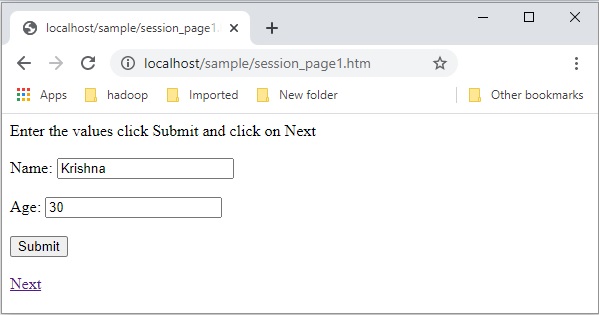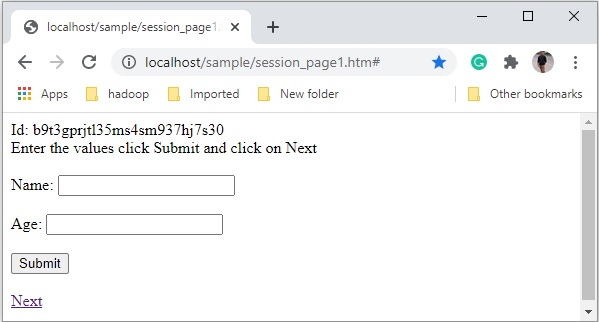
- PHP - Home
- PHP - Roadmap
- PHP - Introduction
- PHP - Installation
- PHP - History
- PHP - Features
- PHP - Syntax
- PHP - Hello World
- PHP - Comments
- PHP - Variables
- PHP - Echo/Print
- PHP - var_dump
- PHP - $ and $$ Variables
- PHP - Constants
- PHP - Magic Constants
- PHP - Data Types
- PHP - Type Casting
- PHP - Type Juggling
- PHP - Strings
- PHP - Boolean
- PHP - Integers
- PHP - Files & I/O
- PHP - Maths Functions
- PHP - Heredoc & Nowdoc
- PHP - Compound Types
- PHP - File Include
- PHP - Date & Time
- PHP - Scalar Type Declarations
- PHP - Return Type Declarations
- PHP - Operators
- PHP - Arithmetic Operators
- PHP - Comparison Operators
- PHP - Logical Operators
- PHP - Assignment Operators
- PHP - String Operators
- PHP - Array Operators
- PHP - Conditional Operators
- PHP - Spread Operator
- PHP - Null Coalescing Operator
- PHP - Spaceship Operator
- PHP Control Statements
- PHP - Decision Making
- PHP - If…Else Statement
- PHP - Switch Statement
- PHP - Loop Types
- PHP - For Loop
- PHP - Foreach Loop
- PHP - While Loop
- PHP - Do…While Loop
- PHP - Break Statement
- PHP - Continue Statement
- PHP Arrays
- PHP - Arrays
- PHP - Indexed Array
- PHP - Associative Array
- PHP - Multidimensional Array
- PHP - Array Functions
- PHP - Constant Arrays
- PHP Functions
- PHP - Functions
- PHP - Function Parameters
- PHP - Call by value
- PHP - Call by Reference
- PHP - Default Arguments
- PHP - Named Arguments
- PHP - Variable Arguments
- PHP - Returning Values
- PHP - Passing Functions
- PHP - Recursive Functions
- PHP - Type Hints
- PHP - Variable Scope
- PHP - Strict Typing
- PHP - Anonymous Functions
- PHP - Arrow Functions
- PHP - Variable Functions
- PHP - Local Variables
- PHP - Global Variables
- PHP Superglobals
- PHP - Superglobals
- PHP - $GLOBALS
- PHP - $_SERVER
- PHP - $_REQUEST
- PHP - $_POST
- PHP - $_GET
- PHP - $_FILES
- PHP - $_ENV
- PHP - $_COOKIE
- PHP - $_SESSION
- PHP File Handling
- PHP - File Handling
- PHP - Open File
- PHP - Read File
- PHP - Write File
- PHP - File Existence
- PHP - Download File
- PHP - Copy File
- PHP - Append File
- PHP - Delete File
- PHP - Handle CSV File
- PHP - File Permissions
- PHP - Create Directory
- PHP - Listing Files
- Object Oriented PHP
- PHP - Object Oriented Programming
- PHP - Classes and Objects
- PHP - Constructor and Destructor
- PHP - Access Modifiers
- PHP - Inheritance
- PHP - Class Constants
- PHP - Abstract Classes
- PHP - Interfaces
- PHP - Traits
- PHP - Static Methods
- PHP - Static Properties
- PHP - Namespaces
- PHP - Object Iteration
- PHP - Encapsulation
- PHP - Final Keyword
- PHP - Overloading
- PHP - Cloning Objects
- PHP - Anonymous Classes
- PHP Web Development
- PHP - Web Concepts
- PHP - Form Handling
- PHP - Form Validation
- PHP - Form Email/URL
- PHP - Complete Form
- PHP - File Inclusion
- PHP - GET & POST
- PHP - File Uploading
- PHP - Cookies
- PHP - Sessions
- PHP - Session Options
- PHP - Sending Emails
- PHP - Sanitize Input
- PHP - Post-Redirect-Get (PRG)
- PHP - Flash Messages
- PHP AJAX
- PHP - AJAX Introduction
- PHP - AJAX Search
- PHP - AJAX XML Parser
- PHP - AJAX Auto Complete Search
- PHP - AJAX RSS Feed Example
- PHP XML
- PHP - XML Introduction
- PHP - Simple XML Parser
- PHP - SAX Parser Example
- PHP - DOM Parser Example
- PHP Login Example
- PHP - Login Example
- PHP - Facebook Login
- PHP - Paypal Integration
- PHP - MySQL Login
- PHP Advanced
- PHP - MySQL
- PHP.INI File Configuration
- PHP - Array Destructuring
- PHP - Coding Standard
- PHP - Regular Expression
- PHP - Error Handling
- PHP - Try…Catch
- PHP - Bugs Debugging
- PHP - For C Developers
- PHP - For PERL Developers
- PHP - Frameworks
- PHP - Core PHP vs Frame Works
- PHP - Design Patterns
- PHP - Filters
- PHP - JSON
- PHP - Exceptions
- PHP - Special Types
- PHP - Hashing
- PHP - Encryption
- PHP - is_null() Function
- PHP - System Calls
- PHP - HTTP Authentication
- PHP - Swapping Variables
- PHP - Closure::call()
- PHP - Filtered unserialize()
- PHP - IntlChar
- PHP - CSPRNG
- PHP - Expectations
- PHP - Use Statement
- PHP - Integer Division
- PHP - Deprecated Features
- PHP - Removed Extensions & SAPIs
- PHP - PEAR
- PHP - CSRF
- PHP - FastCGI Process
- PHP - PDO Extension
- PHP - Built-In Functions
PHP - session_id() Function
Definition and Usage
Sessions or session handling is a way to make the data available across various pages of a web application. The session_id() function is used to set or retrieve a custom id to the current.
Syntax
session_id([$id]);
Parameters
| Sr.No | Parameter & Description |
|---|---|
| 1 |
name(Optional) This is a string value representing the id of the session, if you want to set id of the session using this method. |
Return Values
This returns a String representing the id of the current session (if it has any) or, an empty string if current session doesnt have any id.
PHP Version
This function was first introduced in PHP Version 4 and works in all the later versions.
Example 1
Following example demonstrates the usage of the session_id() function.
<html>
<head>
<title>Setting up a PHP session</title>
</head>
<body>
<?php
//Starting the session
session_start();
$id = session_id();
print("Session Id: ".$id);
?>
</body>
</html>
One executing the above html file it will display the following message −
Session Id: b9t3gprjtl35ms4sm937hj7s30
Example 2
Following is another example of this function, in here we have two pages from the same application in the same session.
session_page1.htm
<?php
if(isset($_POST['SubmitButton'])){
//Starting the session
$id = session_create_id();
session_id($id);
print("\n"."Id: ".$id);
session_start();
$_SESSION['name'] = $_POST['name'];
$_SESSION['age'] = $_POST['age'];
session_commit();
}
?>
<html>
<body>
<form action="#" method="post">
<label for="fname">Enter the values click Submit and click on Next</label>
<br><br><label for="fname">Name:</label>
<input type="text" id="name" name="name"><br><br>
<label for="lname">Age:</label>
<input type="text" id="age" name="age"><br><br>
<input type="submit" name="SubmitButton"/>
<?php
echo '<br><br /><a href="session_page2.htm">Next</a>';
?>
</form>
</body>
</html>
This will produce the following output −

Once you press submit the page will be like −

On clicking on Next the following file is executed.
session_page2.htm
<html>
<head>
<title>Second Page</title>
</head>
<body>
<?php
//Session started
session_start();
print("Values from the session with id: ".session_id());
echo "<br>";
print($_SESSION['name']);
echo "<br>";
print($_SESSION['age']);
?>
</body>
</html>
This will produce the following output −
Values from the session with id: brb9t3gprjtl35ms4sm937hj7s30 Krishna 30
Example 3
You can create a custom session id by using this function as shown below −
<html>
<head>
<title>Setting up a PHP session</title>
</head>
<body>
<?php
//Creating a custom session id
session_id("my-id");
//Starting the session
session_start();
print("Id: ".session_id());
?>
</body>
</html>
One executing the above html file it will display the following message −
Id: my-id